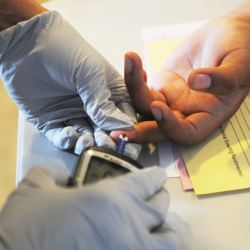The major problem with chronic disease is that by nature of its indolence, it can become exceedingly easy to ignore – none more so than diabetes. Whether you're dealing with patients with insulin dependent diabetes or even those requiring oral medications, noncompliance is a plague. A key feature, unique with diabetic patients, especially in those who rely solely on exogenous insulin administration, is the maintenance required to achieve optimal health outcomes.
Given that constant adherence to monitoring blood glucose levels, calculating amount of insulin required, implementing dietary modifications, diabetes becomes a disease that requires a complete lifestyle overhaul. If you have ever had the misfortune of having your finger pricked to check your blood sugar, you can imagine how difficult it can be for some patients to do this upwards of six times a day. It is painful, time consuming, inconvenient and causes callouses to develop in the fingertips over time.
This is why it is so exciting that Abbott Pharmaceuticals has just gained the United States Food and Drug Administration's approval to start selling a blood glucose monitor that does not require routine finger pricks. The product, called the Freestyle Libre Flash Glucose Monitoring System. The device is a small sensor, roughly the size of a quarter, that is worn on the back of the upper arm. Blood glucose readings appear when the patient brings a hand-held device within proximity of the sensor.
Current continuous blood glucose monitoring devices require placement of an electrode under the skin which relays blood glucose levels to a display device. These devices still require patients to perform finger pricks to calibrate the device for accuracy. Abbott's monitor does not completely eliminate the need for calibration, no technology is perfect, but the company's senior director of global medicine and scientific affairs, Mahmood Kazemi, feels confident of the device's accuracy.
In an article in the Chicago Tribune, Dr. Rasa Kazlauskaite, director of the diabetes technology initiative at Rush University Medical Center, feels in general that continuous glucose monitors are the “second greatest invention” in diabetes management after the invention of insulin. Developing a glucose monitor that is completely non-invasive, certainly, could qualify as the second greatest invention since the recombinant insulin. As a clinician, this is a very exciting stepping stone in making diabetes management less painful in the literal and figurative sense.


